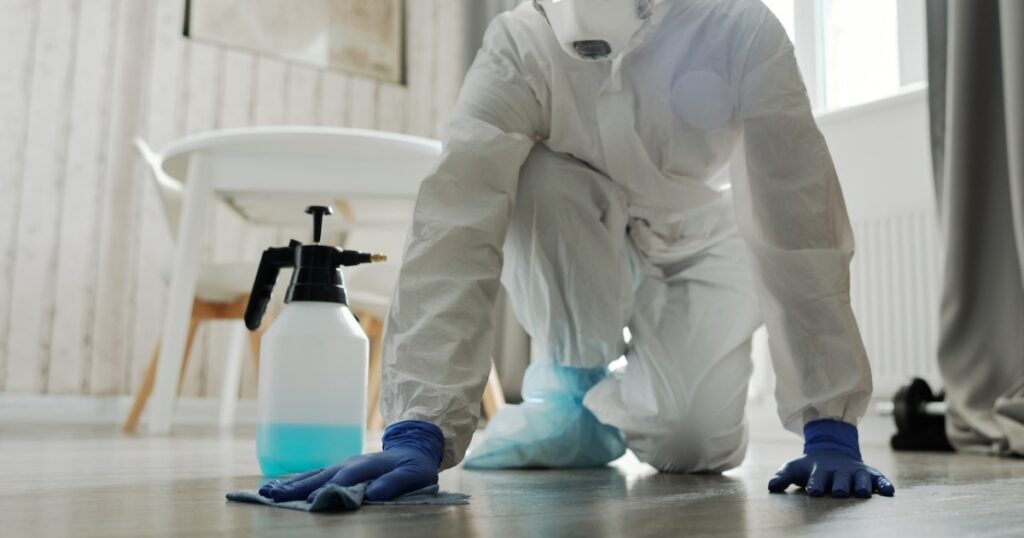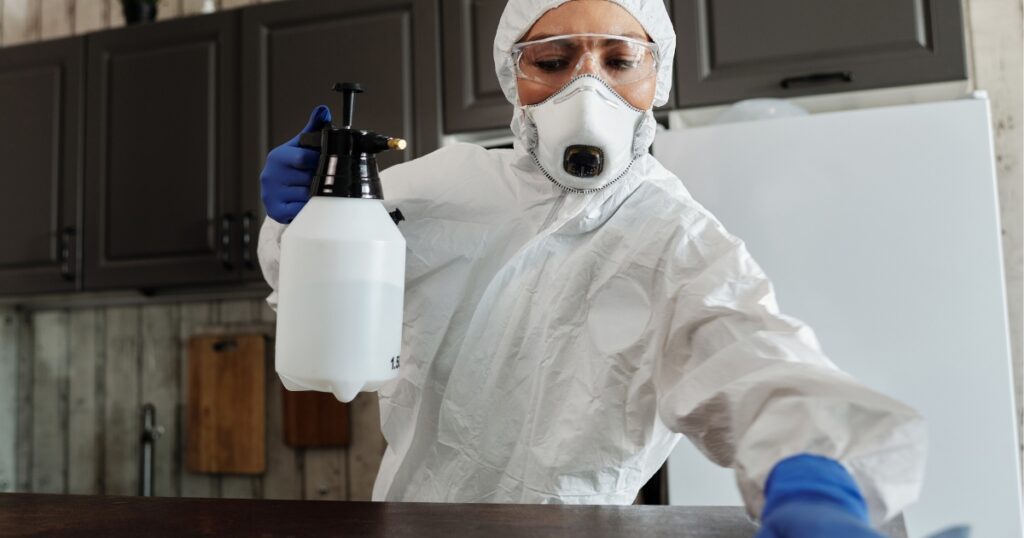
As one of the largest cities in Texas, Dallas is home to a variety of pests, including rats. These rodents can cause significant damage to homes and commercial buildings, as well as pose serious health risks to humans and pets. Effective pest control for rats Dallas is essential for maintaining a safe and healthy environment.
Key Take Aways
- Pest control for rats in Dallas is crucial due to the health risks they pose.
- Rats carry diseases that can be transmitted to humans through urine and feces.
- They can cause property damage by gnawing on wires and chewing through walls.
- Good sanitation habits are important to keep your home rat-free.
- Clean up food spills promptly and store food in airtight containers.
- Seal potential entry points to prevent rats from accessing your home.
- Traps or bait can be effective in controlling rats during an infestation.
- Follow instructions carefully and use pest control methods safely.
- Consider hiring professional pest control services for severe infestations or if you’re uncomfortable dealing with rats.
- Choose eco-friendly pest control options when possible to minimize harm to other animals and the environment.
- By following these tips, you can prevent rat infestations and promote better health practices for yourself and others.
- Remember that prevention is key in pest control.
Rats are among the most common pests in urban areas such as Dallas. They are known for their quick reproduction rate and ability to adapt to different environments, making them difficult to control without professional assistance.
However, their presence can be detrimental to both residential and commercial properties. Rats cause damage by gnawing on wires, insulation, and building materials.
They also contaminate food sources with their feces and urine, which can spread dangerous diseases such as Hantavirus, Salmonella, and Leptospirosis. Additionally, rats can carry fleas that transmit other infections like bubonic plague.
RELATED: The Ultimate Guide to Pest Control in Dallas: Keeping Your Space Critter-Free
The Rat Problem in Dallas
Dallas has a significant rat problem due to its warm climate and dense urban population. The city’s infrastructure provides an abundance of food sources for rats, such as garbage dumpsters and pet food left outside homes and restaurants’ back alleys.
Furthermore, construction sites provide ideal breeding grounds with numerous shelter options available during the building process. It’s estimated that several thousand rat complaints are reported annually across the city, with numbers growing steadily over the years.
It’s clear that effective pest control measures against rats are necessary for maintaining a healthy environment in Dallas. With the right techniques from both individuals and professionals working together towards eradication goals- we can do our part towards reducing or eliminating rat infestations throughout our city.
Understanding Rats
Types of rats found in Dallas and their characteristics
Rats are a common sight in urban environments, including Dallas. There are two main species of rats found in the area: the Norway rat (Rattus norvegicus) and the Roof rat (Rattus rattus). The Norway rat is larger than the Roof rat and typically ranges from 7 to 9 inches long, with a tail that is shorter than its body.
The Roof rat, also known as the Black rat, is smaller, ranging from 6 to 8 inches long, with a tail that is longer than its body. Norway rats have brown fur with scattered black hairs, whereas Roof rats have dark brown or black fur with a lighter underside.
Both species have pointed noses, large ears, and thin tails. They are both excellent climbers and can easily access rooftops or upper floors of buildings.
Habits and behaviors of rats
Rats are notorious for their destructive behavior as they chew on almost anything they can get their teeth on, including wood, plastic, wires, and even lead pipes, which can lead to plumbing issues. They are nocturnal creatures; thus, they remain active during night hours when most people are asleep which makes it difficult for homeowners to detect them early.
Both species of rats prefer warm temperatures but can adapt to colder climates too. They tend to live in large groups called colonies where there is easy access to food sources such as garbage cans or pet food bowls.
When disturbed by humans or predators such as cats or dogs, they make squeaking noises indicating stress or fear. Although these pests usually breed all year round, causing an increase in population quickly if left uncontrolled; however different seasons alter their patterns of activities hence pest control measures should be employed differently depending on whether it’s winter vs summer season.
Understanding the types of rats present in Dallas and their habits and behaviors are crucial in effectively controlling their population. This knowledge helps homeowners to identify signs of a rat infestation early, allowing them to take appropriate measures before the problem worsens.
Signs of Rat Infestation
Rats are nocturnal creatures that tend to stay hidden during the day. However, if you have a rat problem in your home or business, there will be clear indicators of their presence. It’s important to know the signs of a rat infestation so that you can take action before it gets out of hand.
Physical Signs
One of the most obvious physical signs of a rat infestation is droppings. Rats produce up to 40 droppings per night, which are typically dark brown and about 1/4 inch in length. If you see these droppings in your home or business, it’s a good indication that rats are present.
Another physical sign is gnaw marks. Rats have strong teeth that never stop growing, so they constantly chew on things to keep them filed down.
Look for gnaw marks on baseboards, furniture legs, and electrical cords. Burrows are another physical sign of rat infestations.
Rats dig burrows for shelter and nesting, usually in secluded areas like attics or crawl spaces. They use materials like shredded paper or fabric to create nests in these burrows.
Behavioral Signs
Squeaking noises are a common behavioral sign of rats. These noises come from rats communicating with each other through high-pitched sounds that humans can hear.
Sightings are also a behavioral sign of rats. If you see a rat during the day, it’s likely there is an infestation since rats usually only come out at night when they feel safer from predators.
If you notice any combination of these signs in your home or business, it’s essential to take action immediately to prevent the situation from getting worse. Don’t let rats take over your space and put your health at risk – seek professional help as soon as possible!
Health Risks Associated with Rats
When rats infest a home or business, they bring with them a host of health risks. These risks stem from the diseases that rats are known to carry, such as Hantavirus, Salmonella, and Leptospirosis.
Diseases Carried by Rats, such as Hantavirus, Salmonella, and Leptospirosis
Hantavirus is a serious disease that can be transmitted to humans through contact with rat urine or droppings. Symptoms include fever, chills, muscle aches, and shortness of breath. In severe cases, Hantavirus can lead to kidney failure and even death.
Salmonella is another disease that can be transmitted by rats. This bacteria is commonly found in rat droppings and can cause fever, stomach cramps, and diarrhea in humans who come into contact with it.
While most people recover without treatment within four to seven days, severe cases may require hospitalization. Leptospirosis is yet another disease carried by rats.
This bacterial infection can cause flu-like symptoms such as fever and headache, as well as muscle pain and vomiting. In severe cases, leptospirosis can lead to liver or kidney failure.
Potential Health Risks for Humans and Pets
The health risks associated with rats aren’t limited solely to the diseases they carry; rats themselves pose potential dangers to humans as well. For example:
- Rats have been known to bite humans when they feel threatened or cornered
- Rat droppings and urine can contaminate food sources in homes or businesses
- Rat burrows beneath homes or buildings can weaken foundations over time, posing a structural risk
- Pets can also be affected by rats; for example, dogs that come into contact with rat urine may contract leptospirosis, while cats may suffer from respiratory issues if they inhale rat dander or droppings
Overall, it’s clear that the health risks associated with rats are serious and should not be taken lightly. If you suspect a rat infestation in your home or business, it’s important to take immediate action to address the problem and protect yourself and your loved ones from harm.
RELATED: Flea Frenzy: How to Tackle Pest Control in Dallas and Keep Your Home and Pets Flea-Free
Prevention Measures
Proper Sanitation Practices to Eliminate Food Sources for Rats
One of the most important aspects of rat prevention is ensuring that food sources are eliminated. Rats are attracted to any type of food, including pet food, garbage, and even birdseed. The key to preventing rats from entering your home is to eliminate these sources of attraction.
Always ensure that all food items are stored in sealed containers and that garbage is stored in secure bins with tight-fitting lids. It’s equally important to keep your home clean and tidy.
Regularly vacuuming floors, wiping counters, and cleaning up any spills or crumbs will go a long way toward deterring rats from entering your home. Similarly, if you have a garden or fruit trees on your property, be sure to pick up fallen fruits promptly, as these can also attract rats.
Sealing Entry Points to Prevent Rat Access
Rats can enter homes through very small cracks and openings. Therefore it’s important to seal all entry points that could be used by a rat as an access point into your home.
Start by inspecting the exterior walls of your home for any cracks or holes present around doors and windows. Any opening larger than half an inch should be sealed immediately with caulking or wire mesh.
It’s not just the exterior walls you need to worry about either; attic spaces provide cozy nesting space for rats too. This makes it especially important to check for holes in the roof or vents leading into the attic space; these should be covered with rat-proof meshing.
Use of Traps, Baits, or Repellents
For those who want added protection against rats invading their homes after taking preventative measures such as sanitation practices and sealing entry points have not been enough on their own; there are several options available when it comes down to using traps, baits, or repellents to eliminate rats. Traps such as snap traps and live traps are popular choices for homeowners who prefer to avoid using poisons.
Snap traps are designed to kill rats quickly by breaking their necks, while live traps allow homeowners to trap the rat without killing it so that it can be safely released away from the property. Rat baits work by luring rats into eating poisoned bait that will eventually kill them.
Baits come in different forms, including pellets and blocks, and should only be used in enclosed areas so that pets or children cannot access them. Repellents work by scaring rats away with unpleasant smells or sounds.
These repellents include electronic devices that emit high-frequency sounds that are audible only to pests like rats. Alternatively, natural remedies like peppermint oil and mothballs have been said to deter rats from entering homes too.
Professional Pest Control for Rats Dallas
Advantages of Hiring a Professional Pest Control Service
When it comes to rat infestation, hiring a professional pest control service can bring numerous advantages. Firstly, professionals have the knowledge and expertise required to identify the type of rats present in your home and the extent of the infestation.
They can also identify potential entry points that are not obvious to homeowners. This means that they can provide a more effective solution tailored specifically to your situation.
Secondly, pest control experts have access to commercial-grade products and equipment that may not be available for purchase by regular consumers. This includes highly effective rodent baits, traps, and repellents that are designed specifically for rats, compared to over-the-counter products, which may not be as effective or even dangerous if used incorrectly.
Professional rat removal services offer long-lasting solutions that prevent future infestations. By sealing entry points permanently and using preventive measures such as regular inspections and monitoring systems, they can ensure that you get long-term relief from rat problems.
Explanation of Different Methods Used by Professionals
Professional pest control services use different methods when dealing with rat infestation depending on various factors, such as the severity of the infestation, the size of the property, and the presence of children or pets in the household, among others. One popular method is trapping, where different types of traps are strategically placed in areas where rats frequent, such as attics or basements. These include snap traps which are designed to kill rats instantly upon capture, or live traps, where captured rodents are released into another location far away from your home.
Another method is the use of rodenticides – toxic baits that lure rats and then kill them after ingestion. Rodenticides require specific handling since some may pose health risks if ingested accidentally by pets or humans, while others need replacing frequently
Exclusion is a technique that prevents further entry into your home. It involves a thorough inspection of your property to identify entry points for rats that may have gone unnoticed and sealing them off using materials such as metal grates or cement.
This method can be highly effective when done correctly by a professional pest control service. Hiring a professional pest control service is the best way to deal with a rat infestation in your home.
Not only do they offer better solutions, but they also guarantee long-term relief from rat problems. With different methods available, they can tailor their approach specifically to your needs for effective results.
Eco-Friendly Pest Control Options
While traditional pest control methods may be effective, they often use harmful chemicals that can harm the environment, pets, and humans. Fortunately, there are a variety of eco-friendly options available for pest control in Dallas.
The Benefits of Eco-Friendly Pest Control
Eco-friendly pest control is not only better for the environment, but it also has numerous benefits for homeowners as well. Unlike traditional methods that use harsh chemicals, eco-friendly products use natural ingredients that are safer for humans and pets.
Additionally, these products are often more targeted in their approach to pest control and do not harm beneficial insects such as bees and butterflies. Another benefit of eco-friendly pest control is that it can be more cost-effective in the long run.
Traditional chemical treatments may require multiple applications or frequent re-treatments to keep pests at bay. In contrast, many eco-friendly treatments work by creating an inhospitable environment for pests, meaning fewer repeat applications are needed.
Eco-Friendly Pest Control Products
There are a wide variety of eco-friendly pest control products available on the market today. One popular option is diatomaceous earth, a natural powder made from crushed fossils that work by dehydrating insects and other pests. Essential oils such as peppermint oil can also be effective at repelling pests such as rats and mice while leaving behind a pleasant scent.
Another option is to use ultrasonic devices that emit high-frequency sounds to deter rodents without harming them or using any chemicals at all. In addition to these options, many professional pest control services now offer eco-friendly treatments using botanical extracts or other natural ingredients instead of harsh chemicals.
Overall, choosing an eco-friendly approach to pest control not only helps protect the environment but can also provide numerous benefits to homeowners. By using natural products and targeted treatments, eco-friendly pest control can effectively eliminate pests while leaving behind a safer and healthier home.
Frequently Asked Questions
Can pest control get rid of rats?
Yes, pest control companies offer services to get rid of rats. The methods used may include trapping, baiting, and exclusion techniques to eliminate the rats and prevent future infestations.
How long does it take pest control to get rid of rats?
The length of time it takes to get rid of rats can vary depending on the severity of the infestation and the methods used. A pest control professional can provide an estimate based on your specific situation.
How do I get rid of rats permanently?
Getting rid of rats permanently often requires a multi-step approach. This may include sealing off entry points, eliminating food and water sources, trapping or baiting, and regular inspections and maintenance.
Will rats eventually leave?
Rats are unlikely to leave on their own once they have established a nest and a food source. Effective pest control measures are necessary to eliminate the infestation.
Which pest control is best for rats?
The best pest control method for rats may depend on several factors, such as the size of the infestation and the location of the rats. A pest control professional can recommend the most effective methods based on your specific needs.
Why do rats suddenly appear?
Rats may suddenly appear due to several factors, such as changes in weather or landscaping, availability of food and water sources, and proximity to other rat populations. Regular inspections and maintenance can help prevent rat infestations.
Conclusion
Pest control for rats in Dallas is crucial due to the potential health risks associated with these creatures. Rats carry various diseases that can be transmitted to humans through their urine and feces, causing serious health problems.
Additionally, they can cause damage to property by gnawing on wires and chewing through walls. Therefore, it’s essential to take proactive measures to prevent infestation and eliminate any existing rat problems.
To keep your home rat-free, it’s important to practice good sanitation habits, such as cleaning up food spills promptly and storing food in airtight containers. You should also seal any potential entry points that rats may use to gain access to your home. Using traps or bait is an effective way of controlling rats if you suspect an infestation.
However, it’s essential to use them safely and follow instructions carefully. Additionally, if you’re uncomfortable dealing with rats or have a severe infestation problem, consider hiring professional pest control services.
Be mindful of the environment when using pest control methods. Opt for eco-friendly options whenever possible, as they are less harmful to other animals and the environment as a whole.
By adhering to these tips, you can ensure that your home remains free from rat infestations while promoting better health practices for yourself and others around you. Remember that prevention is key when it comes to pest control!
RESOURCE: Dallas County: Public Health Environmental Division






